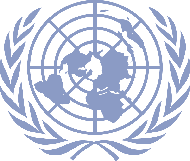 commemoration of white male hegemony. Either way, those who get the day off from work probably take it, while the rest of us grumble at having to spend a holiday at our desks.
commemoration of white male hegemony. Either way, those who get the day off from work probably take it, while the rest of us grumble at having to spend a holiday at our desks.This kind of controversy often happens when people see one thing from different points of view--a difference that maps are very good at revealing. For example, at right is a typical map of the world from 1492. Love him or hate him, we can credit Columbus for sailing into the unknown with little more to guide him than the courage of his convictions. We can also thank Columbus and his contemporaries for helping us see the world's geography more for what it is, and less as a projection of our own philosophy.
Of course, no matter how hard we try to be objective in our map-making, we will always be skewing
 things one way or another. The Mercator Projection is a classic example of objective mapmaking that in fact severely distorts surface area. At the opposite extreme, consider the politically neutral logo of the United Nations, which has dubious navigational value. Which of these is the right map? The answer is-- it depends on what you want to use it for.
things one way or another. The Mercator Projection is a classic example of objective mapmaking that in fact severely distorts surface area. At the opposite extreme, consider the politically neutral logo of the United Nations, which has dubious navigational value. Which of these is the right map? The answer is-- it depends on what you want to use it for.
Today's leaders rely no less on vision and courage than Columbus did, but they also have much better maps to guide them; and those who possess superior maps have a decided advantage over their competitors. For a rigorous analysis of this advantage, a good place to start reading is the work of David Krackhardt. His notion of cognitive social structures deflates our unrealistic hope of finding the one true social map, and replaces it with a multiplicity of perspectives. Not all perspectives are created equal, however. Especially when it comes to perceptions of advice-giving, those with more accurate organizational maps are predominantly those with more power and influence.


No comments:
Post a Comment